Heritage road. A journey along the ancestral trail
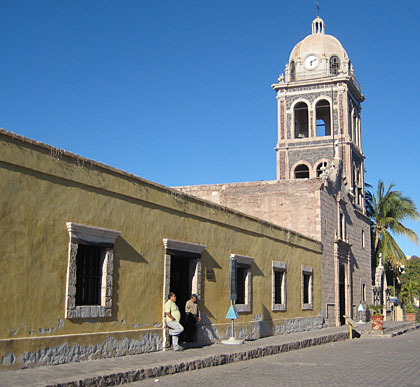
Patrick Garcia | Special to The Sun
Going to Baja California Sur to search for my ancestral legacy was a great adventure. The road trip took three-and-a-half days from Tijuana to Loreto, which is 800 miles south of the border on the Sea of Cortez side of the peninsula. During the drive, there were at least 10 military checkpoints along the way. The soldiers were very friendly with us at each stop. They did not ask for bribes or any personal items we were carrying.
As we traveled south, we stopped at numerous historical sights originally established by Gaspar De Portola and Fray Junipero Serra, and the first Spanish and Mexican pioneers called “soldados de cuera,” the leather-jacket soldiers. Some of the sites were only dirt mounds, others well preserved monuments.
In some areas the desert landscape takes you into another world, with beautiful desert cacti and enormous rock mountains, plains, dry rivers and volcanoes. We sighted wild animals such as rabbits, lobos and long horn sheep, along with raptors and birds of all kinds. On ranches, there were domestic sheep, goats, cows and horses.
As we entered the desert of El Vizcaino, there was a sense of peace and tranquility. For many miles at a time we would not see any homes, stores or ranch houses, then, maybe an abandoned adobe or a little wooden structure of some kind. Every once in a while an animal would trot across the road in front of us. Other vehicles were few, and many of those were California tourists in their RV’s.
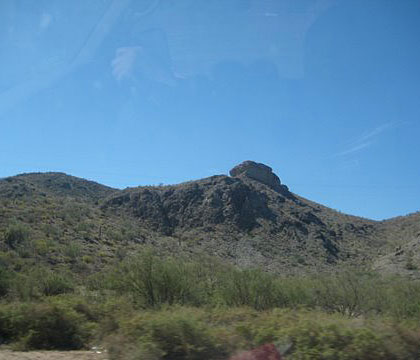
As we entered the lower state of Baja California by the city of Guerrero Negro, a world heritage Whale Sanctuary located on the Pacific side of the peninsula, we started to live the native and Spanish history as it must have been during the 17th and 18th centuries and before. From the state line, we traveled southeast through the desert, sometimes over rolling hills then through flat plains and up a steady climb to higher altitudes. We then traveled next to the Sierra de San Francisco and looked across the desert at great mountain peaks and beautiful forests, cactus and desert bushes with valleys in the distance.
At last we came upon a desert oasis called San Ignacio, home to a mission built in 1728 and one that the Portola group stopped at during their trek to Alta California in 1769. One of my Baja California ancestors, Pedro Amador, was one of the guards for Father Junipero Serra and the other missionaries. Amador’s wife was an Archuleta, one of the old families we discovered and visited in Loreto. Another old family with ties to the Garcia family named Arce has a name plaque on the wall of their home that dates back to the 1700’s.
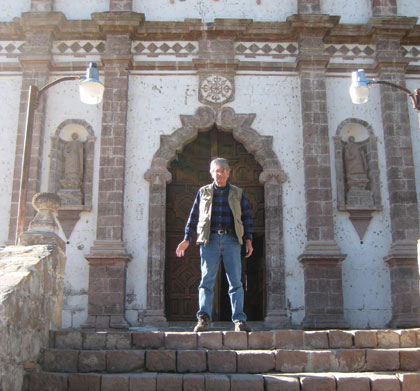
The mission is located on the main plaza with a nice museum just next door. After walking through the mission we walked out to the side patio and watched a lady ring the afternoon church bells. I told her about my search for my family ancestry and she immediately put me in touch with the two historians of the area. They were very helpful.
After a late lunch on the plaza of San Ignacio we headed for the port town of Santa Rosalia and spent the night there. The small city and surrounding area are noted for the Gustav Eiffel Church, built in 1887. The area history includes French mining operations and pre-Columbian Indian villages.
Our main destination was Loreto, which was the first capital of Baja California from 1697 to about 1830. We found a small hotel for the night and then wandered down to the old historical mission town area and looked for the first mission built in Baja California Sur by the Catholic Jesuit order in 1697.
As luck would have it, an innkeeper recommended a well-known and knowledgeable gentleman who knew about everyone in town. With a little networking, I located his place of work. He was not there yet, but the manager called him and told him what I was interested in accomplishing. He arrived within 20 minutes.
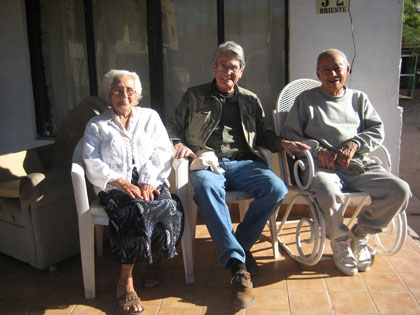
After a short conversation, he told me he knew a few families that might be descendants of my ancestors. We started knocking on doors and talking to the different families; each was very helpful and generous with family information including photos, documents and family plaques that go back to the 1700’s. We even met family members who were in their 80’s and 90’s. They shared an oral history relevant to their family heritage and life in Loreto.
Some of the families still owned ranchos their ancestors had originally established. One of my potential ancestral descendents in Loreto owns a very nice hotel called La Hacienda, which is similar to Sonoma Valley Inn. He invited us to spend the night in the hotel, which we did. It was quite pleasant.
The next day we visited the museum, city hall and the main plaza area. We also visited with a couple from Sonoma who has a very nice small hotel close to the waterfront. They spend part time here in Sonoma and part time in Loreto.
We then drove to a communal ranch (Ejido) near a beach on the Sea of Cortez. A small island sits about a quarter-mile off shore. From the highway at about 2,000 feet a winding dirt road drops down to the sea. It presents very scenic view of local mountains and the sea.
After a brief introduction, the women offered food and soft drinks to us, and then different people came from around the ranch to talk. The children were very excited to talk to us about that far off place called Alta California. My friend had lived on the ranch for about six months some years back, and was welcomed with open arms by the locals. He donated horse saddles and other horse equipment that he had brought from California.
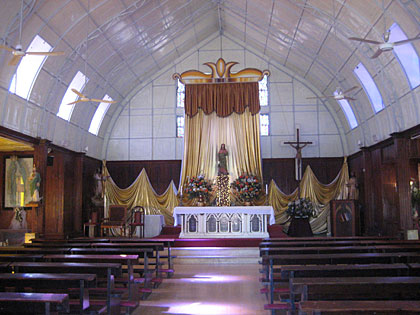
I, in turn, donated copies of a small book called Yo Soy (“I am”) to the young children of the ranch that is written in Spanish by Steve Viglione, a Sonoma resident. The books are dedicated to helping adults and young people learn about themselves and the world about them, especially people with little access to libraries and educational facilities.
Even the young adults from the ranch wanted a book to read and take home. I passed them out to who ever wanted a book. After our brief visit at the ranch, we got back in the pickup and headed back to California driving north another three days. I passed out more books along the return trip to Sonoma.
A 40-year resident of Sonoma County and Sonoma, Garcia chairs the committee for Sonoma’s sister city in Mexico, Patzcuaro, and serves on the board of the Sonoma/Petaluma State Historic Parks Association.
One thought on “Heritage road. A journey along the ancestral trail”
Comments are closed.




Mr. Garcia, thank you for sharing your story and for sharing Yo Soy! with the families in Mexico. By affirming their worth and supporting reading, you are building their futures. God bless you.